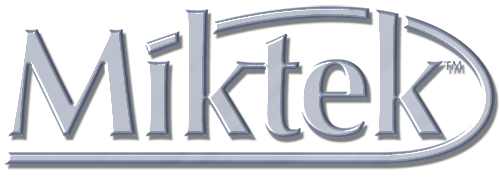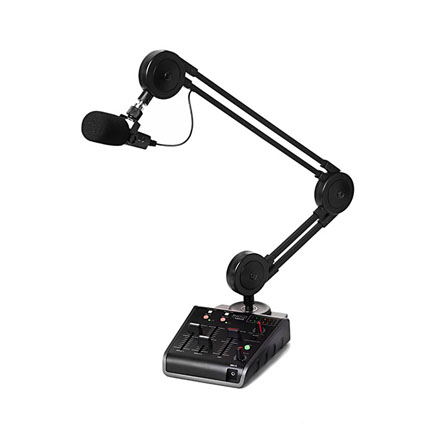The Miktek ProCast SST is probably the best “plug and play” USB mic recording solution available today. I’ve finally gotten my hands on one and am glad that it’s innovative form factor is matched by the audio quality.
I’ve recorded some thoughts using the ProCast and compared it briefly (and unscientifically) with my SM7B, which I switched to at 8:37. This audio is uncompressed with no EQ – the only settings adjusted were volume level to try and match the overall loudness of the two mic setups. [I did engage the built-in high pass filter on the ProCast’s mic around 1:07, which was off until that point and I failed to mention.]
Here’s what I love about the Miktek ProCast SST:
- It has a supremely elegant and functional design with sturdy base, quality faders, and handy built-in boom arm to get the mic closer to the audio source (i.e. your mouth). It truly is a good “all-in-one” solution (unlike other mics that require buying a separate boom mic stand).
- The compact condenser mic sounds really really good and has better than expected rejection, picking up less ambient noise than typical condensers. It is very warm yet crisp and clear, unlike many other USB condenser microphones in this price range which can sound nasal, thin, hollow or boomy.
- The small size of the actual mic is a huge plus for not getting in your way when reading notes or a computer screen, since you don’t have a huge mic (like my SM7B) shoved in your face.
- It “just works” with no additional drivers needed to install for both Mac OS X and Windows 8.
- The 2nd headphone jack includes its own volume control.
- It has a very effective high-pass switch on the mic, which is important for recording speech.
- It has a MONO button which allows you to hear the single mic input in both ears as opposed to just the left. You’d be surprised how many two channel audio interfaces don’t have this feature.
- It has Mute switches on the inputs which light up red when the channel is muted.
- Almost no noise is transmitted through the shell of the mic when bumping the boom arm or pressing buttons on the mixer or tapping on the surface it is sitting on.
- The signal to noise ratio for the built-in mic’s input on the interface is quite good when compared to other setups in this price range (i.e. the hiss of the mic pre for the built-in mic is really low).
- Even though most people can’t tell the difference, to these seasoned audio engineer’s ears the results sound much closer in overall quality to my $1,000 rig (SM7B+Apogee Duet+boom stand) than other $300+ USB mics! (I’m looking at you RØDE Podcaster. The Blue Yeti Pro with a similar boom stand costs $320-ish…)
- Support was great! When I called Miktek for help with an issue trying to set it up for a friend recording narration for PowerPoint 2013 slides, the person who answered the phone personally researched the problem and got back to me within an hour. (Don’t try to use 2+ input interfaces for recording directly in PowerPoint! Microsoft removed all recording settings in Office 2013…)
Here’s what I DON’T like about the Miktek ProCast SST:
- The electret condenser with the included windscreen is very sensitive to plosives even at a distance of 4″+, and there is no good place to mount a pop filter that doesn’t make the boom arm sag.
- The cable coming out of the mic with its molded strain relief feels very cheap and seems like it could be a weak spot for potential shorts if handled frequently. But it is probably just fine…
- Its 35mm headphone jacks are more susceptible to failure compared to 1/4″ jacks. Same with the mini XLR for the 2nd mic input. However, these smaller jacks are an understandable tradeoff for the compact size.
- When I plugged in an additional mic to try out the 2nd input in the interface, there was quite a bit of hiss and crackling noise likely coming from the electronics, which is not present on the other channel’s built-in mic input. This may be an issue with the particular unit I received and I intend to contact them about this.
- The output meters on my unit didn’t seem to register much (if any) signal even when the mic input was clipping and the Mix fader was all the way up.
Despite these few shortcomings, if you’re an amateur voiceover person wanting to step up your game, or a professional podcaster who doesn’t want to mess with a complicated higher-end XLR mic with a separate USB audio interface, the Miktek ProCast SST is what I would recommend over any other “plug and play” USB microphone setup currently available.

